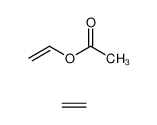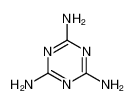| Product name | Cyanogen chloride |
|---|
| Product number | - |
|---|---|
| Other names | 7-Chlor-indan-4-ol |
| Identified uses | For industry use only. Systemic Agent |
|---|---|
| Uses advised against | no data available |
| Company | MOLBASE (Shanghai) Biotechnology Co., Ltd. |
|---|---|
| Address | Floor 4 & 5, Building 12, No. 1001 North Qinzhou Road, Xuhui District, Shanghai, China |
| Telephone | +86(21)64956998 |
| Fax | +86(21)54365166 |
| Emergency phone number | +86-400-6021-666 |
|---|---|
| Service hours | Monday to Friday, 9am-5pm (Standard time zone: UTC/GMT +8 hours). |
Gases under pressure: Compressed gas
Acute toxicity - Oral, Category 1
Acute toxicity - Dermal, Category 1
Eye irritation, Category 2
Acute toxicity - Inhalation, Category 1
Hazardous to the aquatic environment, short-term (Acute) - Category Acute 1
2.2 GHS label elements, including precautionary statements| Pictogram(s) | 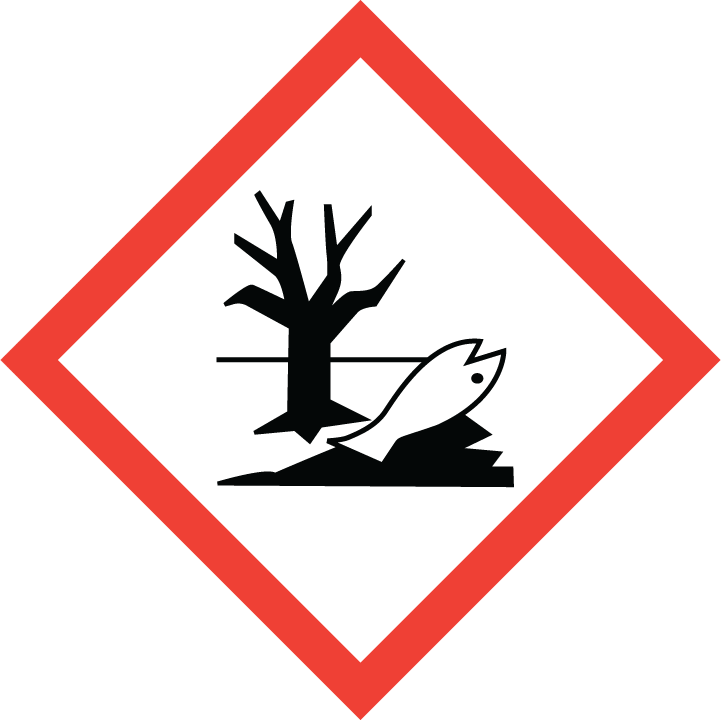 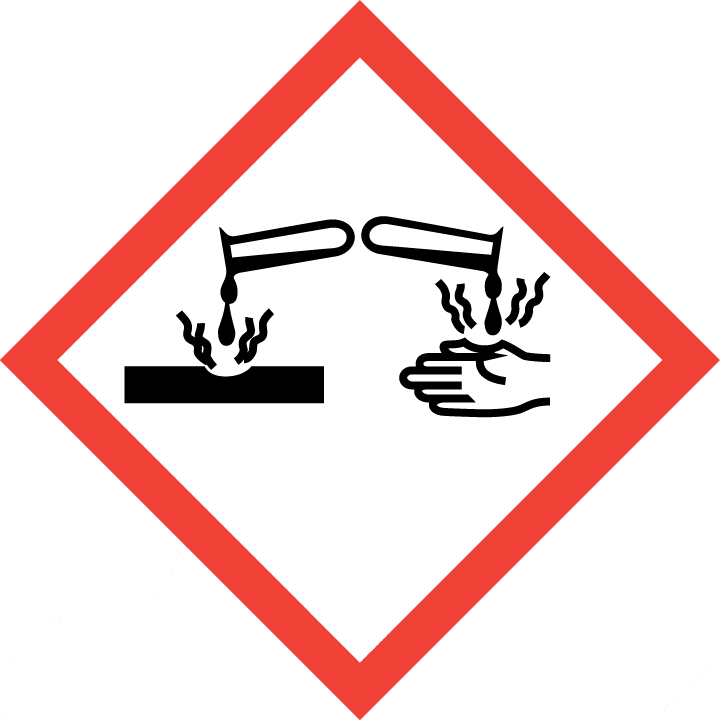 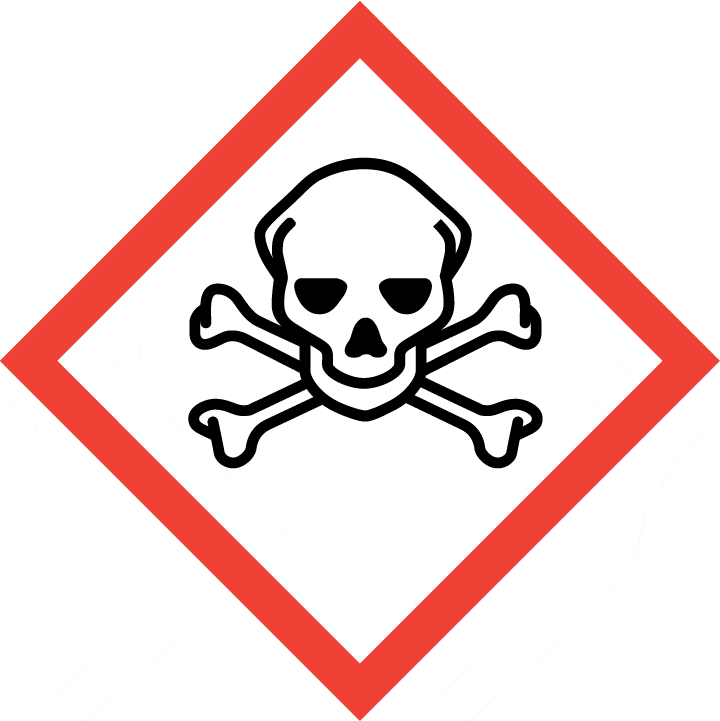 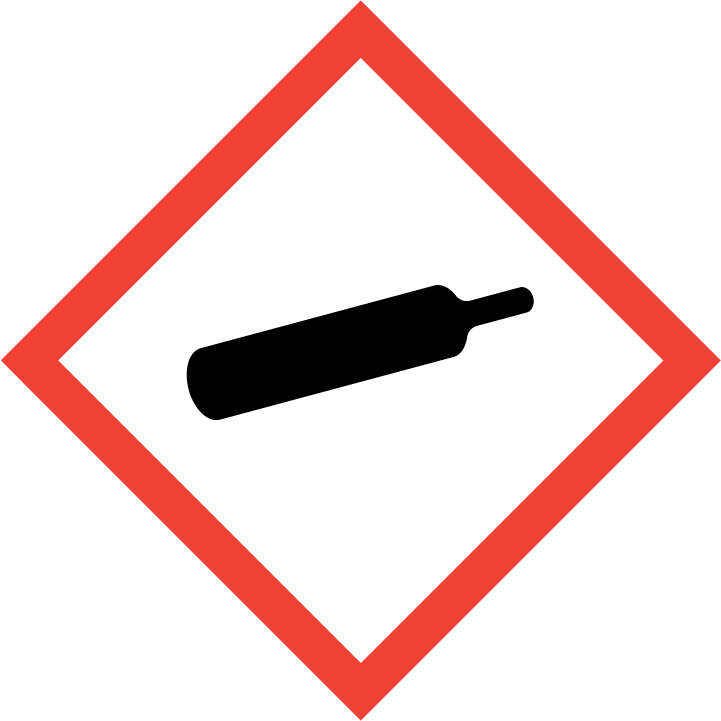 |
|---|---|
| Signal word | Danger |
| Hazard statement(s) | H280 Contains gas under pressure; may explode if heated H300+H310+H330 Fatal if swallowed, in contact with skin or if inhaled H314 Causes severe skin burns and eye damage H319 Causes serious eye irritation H400 Very toxic to aquatic life |
| Precautionary statement(s) | |
| Prevention | P264 Wash ... thoroughly after handling. P270 Do not eat, drink or smoke when using this product. P262 Do not get in eyes, on skin, or on clothing. P280 Wear protective gloves/protective clothing/eye protection/face protection. P260 Do not breathe dust/fume/gas/mist/vapours/spray. P271 Use only outdoors or in a well-ventilated area. P284 [In case of inadequate ventilation] wear respiratory protection. P273 Avoid release to the environment. |
| Response | P301+P310 IF SWALLOWED: Immediately call a POISON CENTER/doctor/… P321 Specific treatment (see ... on this label). P330 Rinse mouth. P302+P352 IF ON SKIN: Wash with plenty of water/... P310 Immediately call a POISON CENTER/doctor/… P361+P364 Take off immediately all contaminated clothing and wash it before reuse. P305+P351+P338 IF IN EYES: Rinse cautiously with water for several minutes. Remove contact lenses, if present and easy to do. Continue rinsing. P337+P313 If eye irritation persists: Get medical advice/attention. P304+P340 IF INHALED: Remove person to fresh air and keep comfortable for breathing. P320 Specific treatment is urgent (see ... on this label). P391 Collect spillage. |
| Storage | P405 Store locked up. P403+P233 Store in a well-ventilated place. Keep container tightly closed. |
| Disposal | P501 Dispose of contents/container to ... |
none
3.Composition/information on ingredients 3.1 Substances| Chemical name | Common names and synonyms | CAS number | EC number | Concentration |
|---|---|---|---|---|
| Cyanogen chloride | Cyanogen chloride | 506-77-4 | none | 100% |
Consult a physician. Show this safety data sheet to the doctor in attendance.
If inhaledFresh air, rest. Half-upright position. Artificial respiration may be needed. Refer for medical attention.
In case of skin contactON FROSTBITE: rinse with plenty of water, do NOT remove clothes. Refer for medical attention .
In case of eye contactFirst rinse with plenty of water for several minutes (remove contact lenses if easily possible), then refer for medical attention.
If swallowedNever give anything by mouth to an unconscious person. Rinse mouth with water. Consult a physician.
4.2 Most important symptoms/effects, acute and delayedVAPOR: POISONOUS IF INHALED OR IF SKIN IS EXPOSED. Irritating to eyes. LIQUID: POISONOUS IF SWALLOWED. Will burn skin and eyes. (USCG, 1999)
4.3 Indication of immediate medical attention and special treatment needed, if necessary/PREHOSPITAL/ Triage procedures and medical management guidelines. (See ATSDR Toxicology Profile on cyanide and ATSDR medical management guidelines on hydrogen cyanide.) If inhaled: Fresh air, rest. Half-upright position. Artificial respiration if indicated. Seek medical attention immediately. If skin contact: Frostbite: rinse with plenty of water, do NOT remove clothes. Seek medical attention immediately. If eye contact: First rinse with plenty of water for several minutes. Seek medical attention immediately.
5.Fire-fighting measures 5.1 Extinguishing media Suitable extinguishing mediaFor small fires, use dry chemical or carbon dioxide.
5.2 Specific hazards arising from the chemicalNot flammable. POISONOUS GASES ARE PRODUCED WHEN HEATED IN FIRE. Overheated containers can explode. (USCG, 1999)
5.3 Special protective actions for fire-fightersWear self-contained breathing apparatus for firefighting if necessary.
6.Accidental release measures 6.1 Personal precautions, protective equipment and emergency proceduresUse personal protective equipment. Avoid dust formation. Avoid breathing vapours, mist or gas. Ensure adequate ventilation. Evacuate personnel to safe areas. Avoid breathing dust. For personal protection see section 8.
6.2 Environmental precautionsEvacuate danger area! Consult an expert! Ventilation. NEVER direct water jet on liquid. Remove vapour cloud with fine water spray. Do NOT wash away into sewer. Personal protection: chemical protection suit including self-contained breathing apparatus.
6.3 Methods and materials for containment and cleaning upEnvironmental considerations - Land spill: Dig a pit, pond, lagoon, or holding area to contain liquid or solid material. /SRP: If time permits, pits, ponds, lagoons, soak holes, or holding areas should be sealed with an impermeable flexible membrane liner./ Dike surface flow using soil, sand bags, foamed polyurethane, or foamed concrete. Absorb bulk liquid with fly ash or cement powder. /Cyanogen chloride, inhibited/
7.Handling and storage 7.1 Precautions for safe handlingAvoid contact with skin and eyes. Avoid formation of dust and aerosols. Avoid exposure - obtain special instructions before use.Provide appropriate exhaust ventilation at places where dust is formed. For precautions see section 2.2.
7.2 Conditions for safe storage, including any incompatibilitiesFireproof if in building. Provision to contain effluent from fire extinguishing. Cool. Store in an area having corrosion resistant concrete floor.Fireproof if in building. Provision to contain effluent from fire extinguishing. Cool. ... A harmful concentration of this gas in the air will be reached very quickly on loss of containment.
8.Exposure controls/personal protection 8.1 Control parameters Occupational Exposure limit valuesRecommended Exposure Limit: 15 Min Ceiling Value: 0.3 ppm (0.6 mg/cu m).
Biological limit valuesno data available
8.2 Appropriate engineering controlsHandle in accordance with good industrial hygiene and safety practice. Wash hands before breaks and at the end of workday.
8.3 Individual protection measures, such as personal protective equipment (PPE) Eye/face protectionSafety glasses with side-shields conforming to EN166. Use equipment for eye protection tested and approved under appropriate government standards such as NIOSH (US) or EN 166(EU).
Skin protectionWear impervious clothing. The type of protective equipment must be selected according to the concentration and amount of the dangerous substance at the specific workplace. Handle with gloves. Gloves must be inspected prior to use. Use proper glove removal technique(without touching glove's outer surface) to avoid skin contact with this product. Dispose of contaminated gloves after use in accordance with applicable laws and good laboratory practices. Wash and dry hands. The selected protective gloves have to satisfy the specifications of EU Directive 89/686/EEC and the standard EN 374 derived from it.
Respiratory protectionWear dust mask when handling large quantities.
Thermal hazardsno data available
9.Physical and chemical properties| Physical state | Colorless, liquid /gas |
|---|---|
| Colour | Colorless volatile liquid or gas |
| Odour | Acrid, choking odor |
| Melting point/ freezing point | 6.5ºC |
| Boiling point or initial boiling point and boiling range | 13.8ºC at 760 mmHg |
| Flammability | Not combustible. Heating will cause rise in pressure with risk of bursting. Gives off irritating or toxic fumes (or gases) in a fire. |
| Lower and upper explosion limit / flammability limit | no data available |
| Flash point | Not Applicable. Not flammable. (USCG, 1999) |
| Auto-ignition temperature | Not Applicable. Not flammable. (USCG, 1999) |
| Decomposition temperature | no data available |
| pH | no data available |
| Kinematic viscosity | no data available |
| Solubility | 7 % (NIOSH, 2016) |
| Partition coefficient n-octanol/water (log value) | no data available |
| Vapour pressure | 704.36 mm Hg at 10°C (USCG, 1999) |
| Density and/or relative density | 1.234 g/cm3 |
| Relative vapour density | 2.1 (USCG, 1999) (Relative to Air) |
| Particle characteristics | no data available |
no data available
10.2 Chemical stabilityTends to form polymers on storage.
10.3 Possibility of hazardous reactionsNot combustible. Heating will cause rise in pressure with risk of bursting. Gives off irritating or toxic gases including cyanide gas in a fire.The gas is heavier than air.Vapors may be heavier than air. They will spread along the ground and collect and stay in poorly-ventilated, low-lying, or confined areas (e.g., sewers, basements, and tanks).Hazardous concentrations may develop quickly in enclosed, poorly-ventilated, or low-lying areas. Keep out of these areas. Stay upwind.CYANOGEN CHLORIDE may trimerize violently to form cyanuric chloride, catalyzed by hydrogen chloride or ammonium chloride. Reacts exothermically with alkenes and alkynes. Benzene and cyanogen halides yield HCl as a byproduct (Hagedorn, F. H. Gelbke, and Federal Republic of Germany. 2002. Nitriles. In Ullmann's Encyclopedia of Industrial Chemistry. Wiley-VCH Verlag GmbH & Co. KGaA.).
10.4 Conditions to avoidno data available
10.5 Incompatible materialsContact with alcohols, acids, acid salts, amines, strong alkalis, olefins, strong oxidizers may cause fire and explosion.
10.6 Hazardous decomposition productsWhen heated to decomposition ... it will ... produce highly toxic and corrosive fumes such as /hydrogen chloride, hydrogen cyanide and nitrogen oxides/.
11.Toxicological information Acute toxicity- Oral: LD50 Cat oral 6 mg/kg
- Inhalation: no data available
- Dermal: no data available
no data available
Serious eye damage/irritationno data available
Respiratory or skin sensitizationno data available
Germ cell mutagenicityno data available
Carcinogenicityno data available
Reproductive toxicityno data available
STOT-single exposureno data available
STOT-repeated exposureno data available
Aspiration hazardno data available
12.Ecological information 12.1 Toxicity- Toxicity to fish: no data available
- Toxicity to daphnia and other aquatic invertebrates: LC50; Species: Daphnia magna (Water flea) age 24 hr; Conditions: static bioassay; Concentration: 0.04 mg/L for 24 hr
- Toxicity to algae: no data available
- Toxicity to microorganisms: no data available
Cyanogen chloride is extremely volatile and hydrolyzes rapidly(1), suggesting that biodegradation will not be an important environmental fate process(SRC).[(1) Munro NB et al; Environ Health Perspect 107: 933-74 (1999)] Full text: PMC1566810
12.3 Bioaccumulative potentialCyanogen chloride is extremely volatile and hydrolyzes rapidly(1), suggesting that bioconcentration will not be an important environmental fate process(SRC).[(1) Munro NB et al; Environ Health Perspect 107: 933-74 (1999)] Full text: PMC1566810
12.4 Mobility in soilThe high volatility and rapid hydrolysis of cyanogen chloride(1) would suggest that adsorption to soil and sediment is not an important environmental fate process(SRC).[(1) Munro NB et al; Environ Health Perspect 107: 933-74 (1999)] Full text: PMC1566810
12.5 Other adverse effectsno data available
13.Disposal considerations 13.1 Disposal methods ProductThe material can be disposed of by removal to a licensed chemical destruction plant or by controlled incineration with flue gas scrubbing. Do not contaminate water, foodstuffs, feed or seed by storage or disposal. Do not discharge to sewer systems.
Contaminated packagingContainers can be triply rinsed (or equivalent) and offered for recycling or reconditioning. Alternatively, the packaging can be punctured to make it unusable for other purposes and then be disposed of in a sanitary landfill. Controlled incineration with flue gas scrubbing is possible for combustible packaging materials.
14.Transport information 14.1 UN Number| ADR/RID: UN1589 | IMDG: UN1589 | IATA: UN1589 |
| ADR/RID: CYANOGEN CHLORIDE, STABILIZED |
| IMDG: CYANOGEN CHLORIDE, STABILIZED |
| IATA: CYANOGEN CHLORIDE, STABILIZED |
| ADR/RID: 2.3 | IMDG: 2.3 | IATA: 2.3 |
| ADR/RID: unknown | IMDG: unknown | IATA: unknown |
| ADR/RID: yes | IMDG: yes | IATA: yes |
no data available
14.7 Transport in bulk according to Annex II of MARPOL 73/78 and the IBC Codeno data available
15.Regulatory information 15.1 Safety, health and environmental regulations specific for the product in question| Chemical name | Common names and synonyms | CAS number | EC number |
|---|---|---|---|
| Cyanogen chloride | Cyanogen chloride | 506-77-4 | none |
| European Inventory of Existing Commercial Chemical Substances (EINECS) | Listed. | ||
| EC Inventory | Listed. | ||
| United States Toxic Substances Control Act (TSCA) Inventory | Listed. | ||
| China Catalog of Hazardous chemicals 2015 | Listed. | ||
| New Zealand Inventory of Chemicals (NZIoC) | Listed. | ||
| Philippines Inventory of Chemicals and Chemical Substances (PICCS) | Listed. | ||
| Vietnam National Chemical Inventory | Not Listed. | ||
| Chinese Chemical Inventory of Existing Chemical Substances (China IECSC) | Not Listed. | ||
| Creation Date | Aug 12, 2017 |
|---|---|
| Revision Date | Aug 12, 2017 |
- CAS: Chemical Abstracts Service
- ADR: European Agreement concerning the International Carriage of Dangerous Goods by Road
- RID: Regulation concerning the International Carriage of Dangerous Goods by Rail
- IMDG: International Maritime Dangerous Goods
- IATA: International Air Transportation Association
- TWA: Time Weighted Average
- STEL: Short term exposure limit
- LC50: Lethal Concentration 50%
- LD50: Lethal Dose 50%
- EC50: Effective Concentration 50%
- IPCS - The International Chemical Safety Cards (ICSC), website: http://www.ilo.org/dyn/icsc/showcard.home
- HSDB - Hazardous Substances Data Bank, website: https://toxnet.nlm.nih.gov/newtoxnet/hsdb.htm
- IARC - International Agency for Research on Cancer, website: http://www.iarc.fr/
- eChemPortal - The Global Portal to Information on Chemical Substances by OECD, website: http://www.echemportal.org/echemportal/index?pageID=0&request_locale=en
- CAMEO Chemicals, website: http://cameochemicals.noaa.gov/search/simple
- ChemIDplus, website: http://chem.sis.nlm.nih.gov/chemidplus/chemidlite.jsp
- ERG - Emergency Response Guidebook by U.S. Department of Transportation, website: http://www.phmsa.dot.gov/hazmat/library/erg
- Germany GESTIS-database on hazard substance, website: http://www.dguv.de/ifa/gestis/gestis-stoffdatenbank/index-2.jsp
- ECHA - European Chemicals Agency, website: https://echa.europa.eu/

















